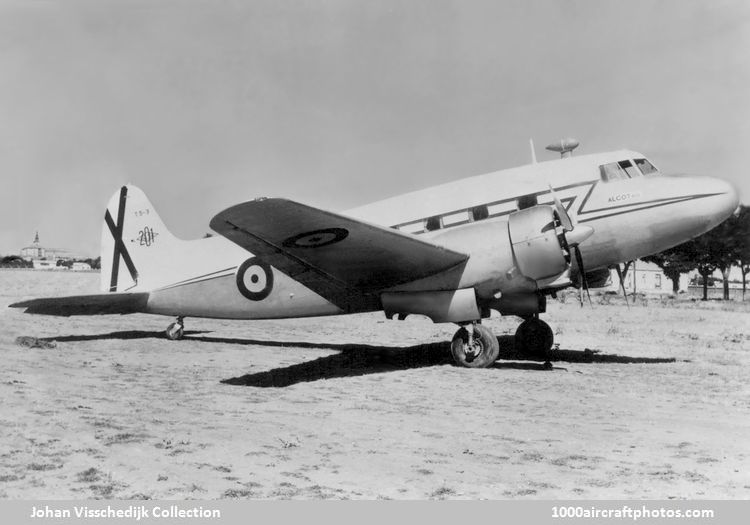Several versions were developed:
C-201A and C-201B two-crew and ten-passenger transports
C-201D and C-201F navigation, radio, multi-engine and blind-flying trainers
C-201E and C-201G bombing and photographic reconnaissance trainers
The C-201A, C-201D, and C-201E were to be powered by two Cheetah XXVII engines, while the C-201B, C-201F, and C-201G were to be powered by two similar indigenous 500 hp Elizalde Sirio S-VII-A engines.
Produced at Getafe, the first aircraft of the pre-series took off in 1953 and by the end of 1955 all 112 airframes were completed, however, only eleven aircraft were delivered.
The Elizalde engine manufacturer was taken over by ENMASA (Empresa National de Motores de Aviation, S.A.) and the Sirio engine (and its domestic propellers) could not be produced in time, while due the lack of foreign exchange of the Spanish government and the international isolation of the country, only a few engines could be acquired abroad. These included four 540 hp Alvis Leonides 503/7 nine-cylinder air-cooled radial engines, and some similar 450 hp Pratt & Whitney R-985 Wasp Junior engines.
Of the aircraft produced, four were passenger transports, four were bomb/photo trainers and the remaining were navigation and blind-flying trainers. One aircraft was experimentally fitted with Wasp Junior's, one was fitted with Leonides engines (designated C-201H), one was fitted with Sirio's, while the remaining aircraft were fitted with Cheetah's. The engine shortage had not been solved by 1960, the contract was cancelled (without losses to CASA) and the remaining 96 engineless airframes were scrapped."
